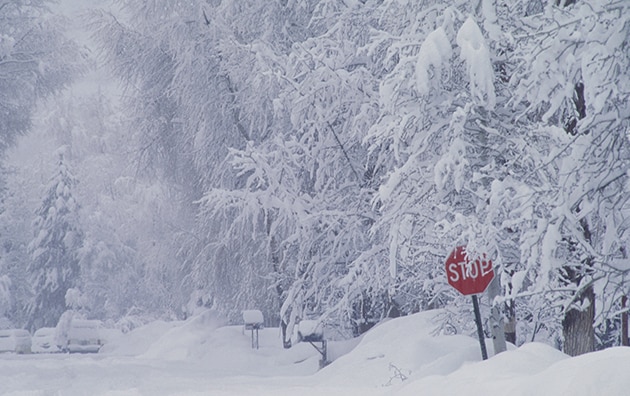How to Help Prepare for an Ice Storm


We’re all familiar with severe winter weather – the good, and the bad. While icicles on your front porch can be pretty, ice storms can pose a serious hazard.
The best thing to do when an ice storm is coming to your area is to prepare. Here are some tips to help protect your home and family.
Prepare your emergency kit.
An emergency kit contains the essentials that your family (including pets) might need in the event of an ice storm. This includes items such as clean drinking water, non-perishable food, first-aid supplies, extra clothing and blankets, and flashlights.
Bring in outdoor items.
Cover outdoor items, such as barbecues and patio furniture, or if possible, bring them inside until after the storm to prevent damages. (Note – do not use a propane-fueled device in an enclosed area to avoid Carbon Monoxide poisoning.1)
Find an alternative heat source.
During a severe ice storm, you could lose power for several days during sub-zero temperatures. Having a safe alternative heat source is key to ensure your family is not subjected to the cold. This could include a fireplace, a wood stove, or a generator. (Note – keep a fire extinguisher on hand with the use of any of these heat sources and be sure all family members know how to operate the extinguisher.2)
Stay home if possible.
Keeping close to home and off the roads can prevent getting caught away from your supplies and loved ones if an ice storm comes on faster or more intensely than expected. Roads can quickly become treacherous and being trapped in a vehicle in an ice storm can be dangerous.
Prepare your vehicle.
Even though you should stay off the roads during an ice storm, it is still a good idea to prepare your vehicle in case you need it for an emergency. Be sure that the gas tank is full and that your winter tires are on.
Be sure to have supplies on hand.
In addition to your emergency kit, be sure that your pantry is stocked with food, clean drinking water, and medicine. You should be prepared to be self-sustaining for 3 days in the event of a winter storm.3 Be sure to have plenty of non-perishable foods, such as canned-goods, and any essential prescriptions your family needs.
Stock up on de-icing products.
Having de-icing products on hand means that you can respond quickly when an ice storm comes on fast. Products such as sand, rock salt, and shovels can help melt or remove ice and provide necessary traction when needed.
Charge your devices.
Be sure that your electronics, such as laptops and phones, are fully charged before an ice storm in case you need to call for help. It is also a good idea to have extra power banks on hand in case the power goes out for an extended period.
Insulate your fridge.
If the power does go out, have a way to insulate your fridge so that perishables don’t expire. Be sure to set your fridge to 4°C and freezers at or below -18°C before the storm and avoid opening your fridge and freezer if at all possible. If the power does go out, your fridge will generally keep food cold for 4 hours. If your freezer is full, it should keep food frozen for about 48 hours – if it’s half full, it will keep food frozen for closer to 24 hours.3
Review your insurance policy.
Have peace of mind that even if an ice storm arrives at your doorstep, your home can be protected against costly losses. Talk to your broker to understand what is covered by your homeowner’s policy and confirm that it is up to date and includes the necessary coverages.
For more ice storm safety tips, visit the Government of Canada’s Get Prepared website.
https://www.getprepared.gc.ca/
SOURCES: